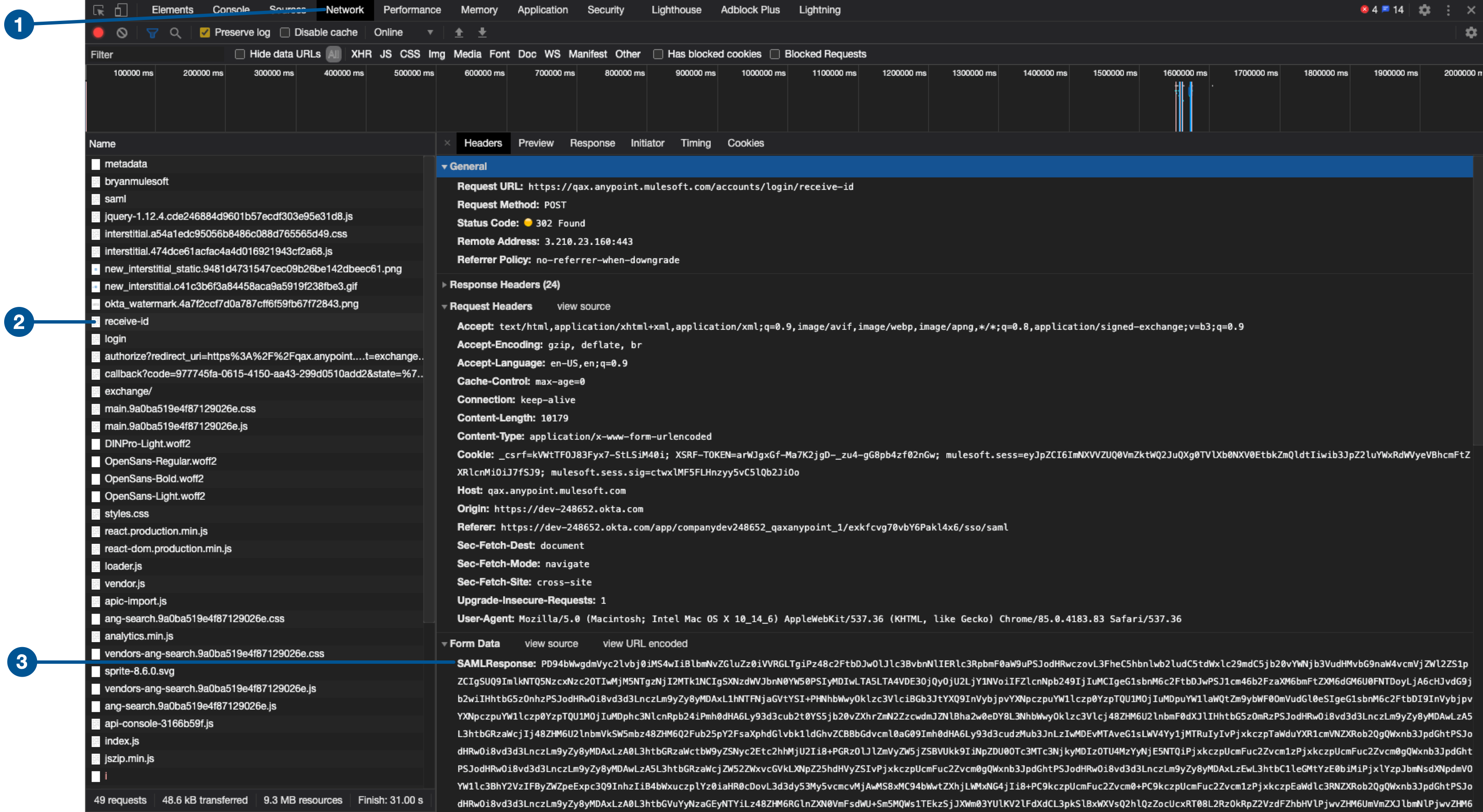https://www.mulesoft.com/support-login
View a SAML Response in the Browser
To view your SAML response in a browser, perform a single sign-on (SSO) and use the developer tools in your browser to find the bearer token and SAML response.
| Complete this task before calling the MuleSoft Support team to assist you in troubleshooting your SAML 2.0 compliant SSO setup. |
-
Open a new tab in your browser and open Chrome Developer Tools:
-
In the Chrome developer tool:
-
Select the Network tab.
-
Select Preserve log.
-
Optionally, if the Method column isn’t visible in the Developer Tools Network log pane, right-click any column label and select Method.
-
-
In the Access Management navigation menu, click Business Groups.
-
Click the name of your root organization.
-
Click the Settings tab.
-
Copy the domain name.
-
Go to
anypoint.mulesoft.com/accounts/login/domain_name. This will redirect you to your IDP’s single sign-on page. -
Enter the IDP account credentials and authenticate yourself.
-
In Headers, look for a SAML Post in the Developer Tools Network log pane and select it.
Other tools or tracers might have different labels. . Record the SAML response element.
After recording the SAML response, use it to obtain a bearer token to access platform APIs. It’s also useful to record the SAML response to provide to MuleSoft support if you contact them.
-
Log in to the MuleSoft Support Portal:
-
Provide a screenshot of your SAML configuration in Anypoint Platform.
-
Include an XML SAML assertion.
Example: Chrome Developer Tools SAML Response Element
This image shows a SAML response element in Chrome developer tools after signing in to Anypoint Platform using SSO:

In the Network tab (1), the receive-id line (2) indicates that you attempted to sign in to Anypoint Platform using single signon through your identity provider.
Because the signin is successful, you can expand receive-id and access form data that contains your SAML response element (3). Unsuccessful signin attempts still generate SAML response elements.



